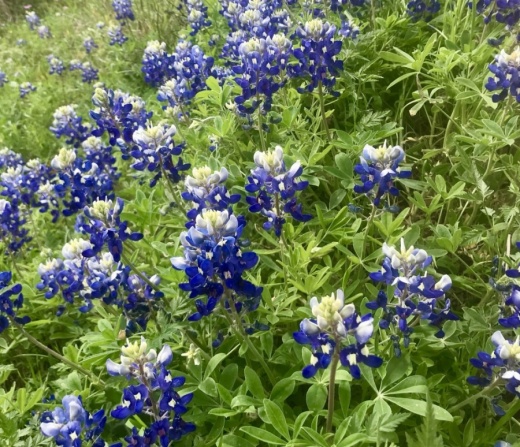Although slightly later than in recent years, Texas bluebonnets and other native flowers started to bloom in the Austin area in mid-March, and different species should begin to pop up over the next three months.
“Most native perennial or biennial plants such as bluebonnets fared just fine under the insulated snow and ice,” TPWD botanist Jason Singhurst said in a news release March 15. “If we can get some steady rain in the coming weeks and temperatures stay in the mid-80's or below through April, it should be a great Texas bluebonnet spring.”
Andrea DeLong-Amaya, the director of horticulture at the Lady Bird Johnson Wildflower Center, said she expects wildflowers to bloom as usual, with bluebonnets expected to peak in early to mid-April.
“Our Texas bluebonnets and many other native wildflowers are adapted to cold temperatures, and the 6 to 8 inches of snow the area received acted as a blanket to protect them against the many days of freezing temperatures,” she said.
However, the schedule for native flowering trees may have been impacted by the weather, she said. Still, some trees including redbuds, Mexican plums and Texas mountain laurels should be blooming this spring. Other evergreen trees that had displayed buds earlier this year but lost them due to the freeze may not show flowers like normal.
Central Texas is home to hundreds of wildflower species that can be found in open fields, along local roads and highways, and at local parks. Here are some of the most prominent that can be found in the area.
Goldeneye phlox
 Visual: small purple or pink flower with five petals and a hollow, white-to-yellow center
Visual: small purple or pink flower with five petals and a hollow, white-to-yellow centerFun fact: Phlox is pronounced “flocks."
Time active: February-May
Golden groundsel
 Visual: small flowers with spread-out, yellow petals and an orange pollen disc at the center
Visual: small flowers with spread-out, yellow petals and an orange pollen disc at the centerFun fact: It is an evergreen plant that blooms each spring.
Time active: February-June
Pink evening primrose
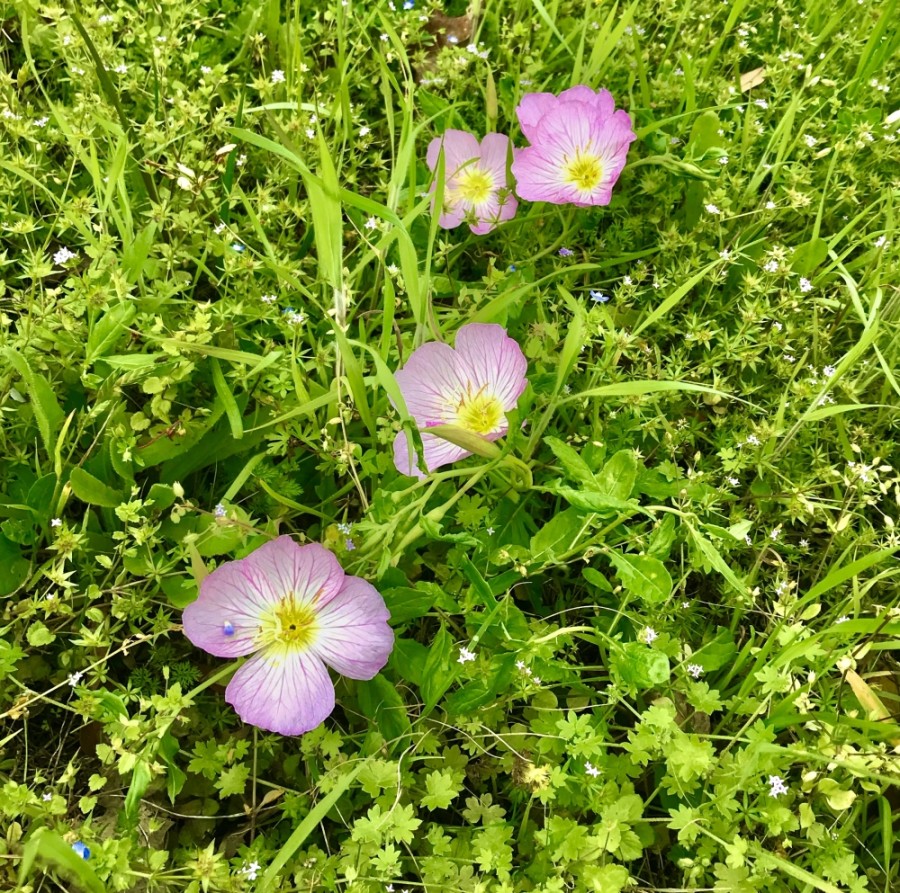 Visual: a light pink or white flower with a yellow center and four distinct petals
Visual: a light pink or white flower with a yellow center and four distinct petalsFun fact: Evening primroses typically open flowers in the evenings.
Time active: February-June
Texas bluebonnets
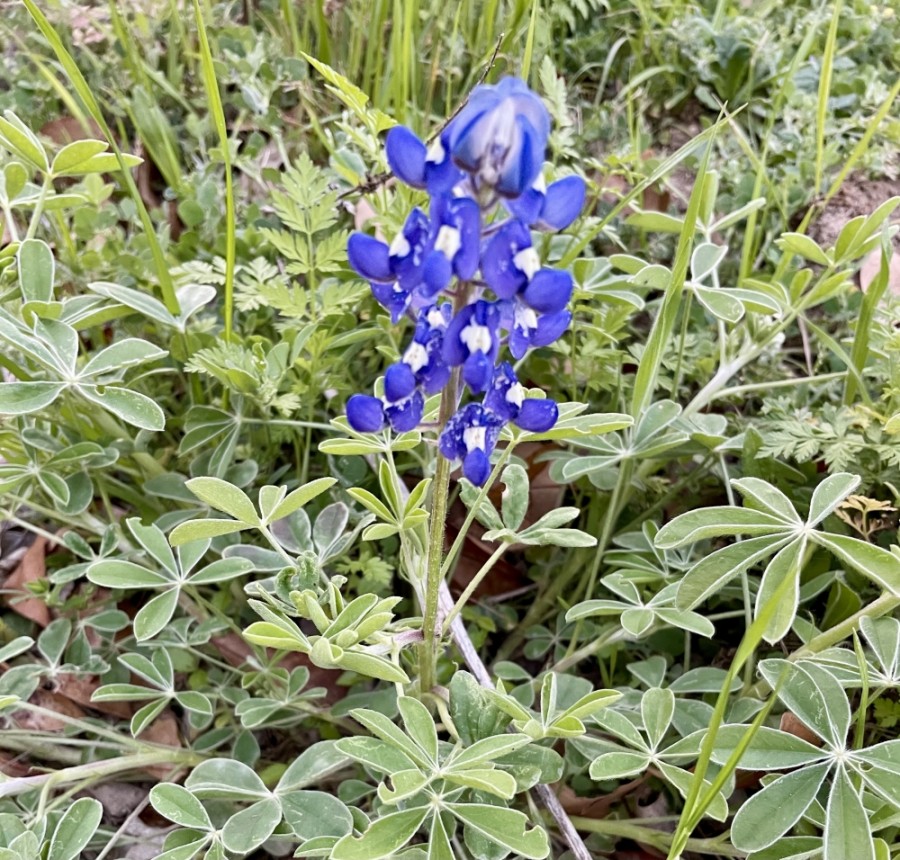 Visual: a group of purple/blue and white petals at the top of a thin stem
Visual: a group of purple/blue and white petals at the top of a thin stemFun fact: It is the official state flower of Texas.
Time active: March-May
Indian paintbrush
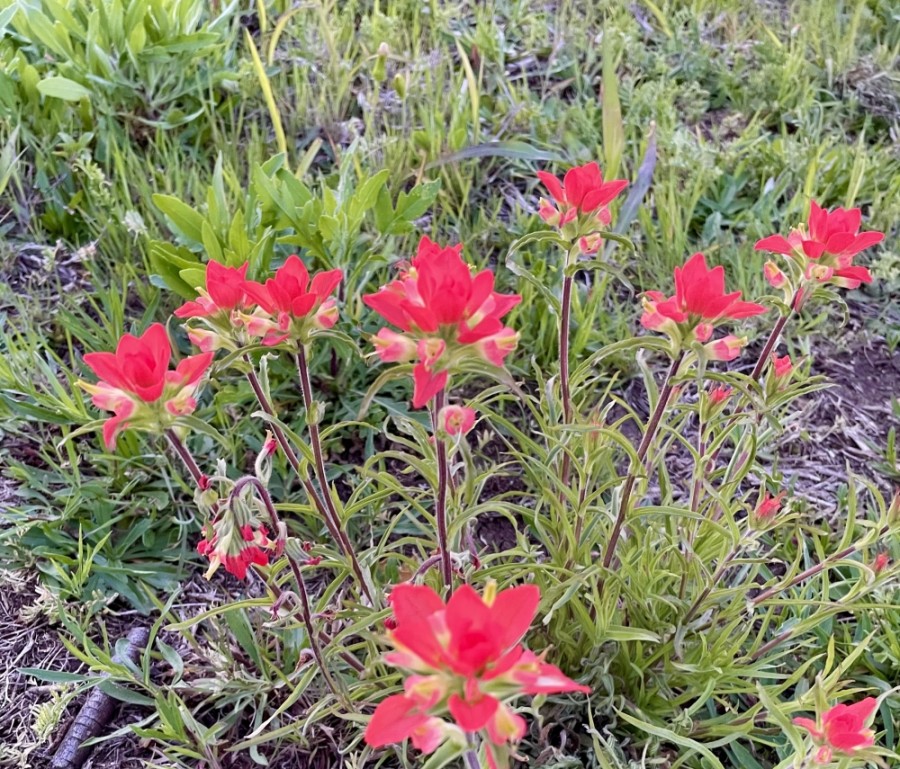 Visual: fanned top with orange/red leaves under small, white flowers
Visual: fanned top with orange/red leaves under small, white flowersFun fact: Varieties can vary in color, including shades of yellow.
Time active: March-May
Texas yellowstar
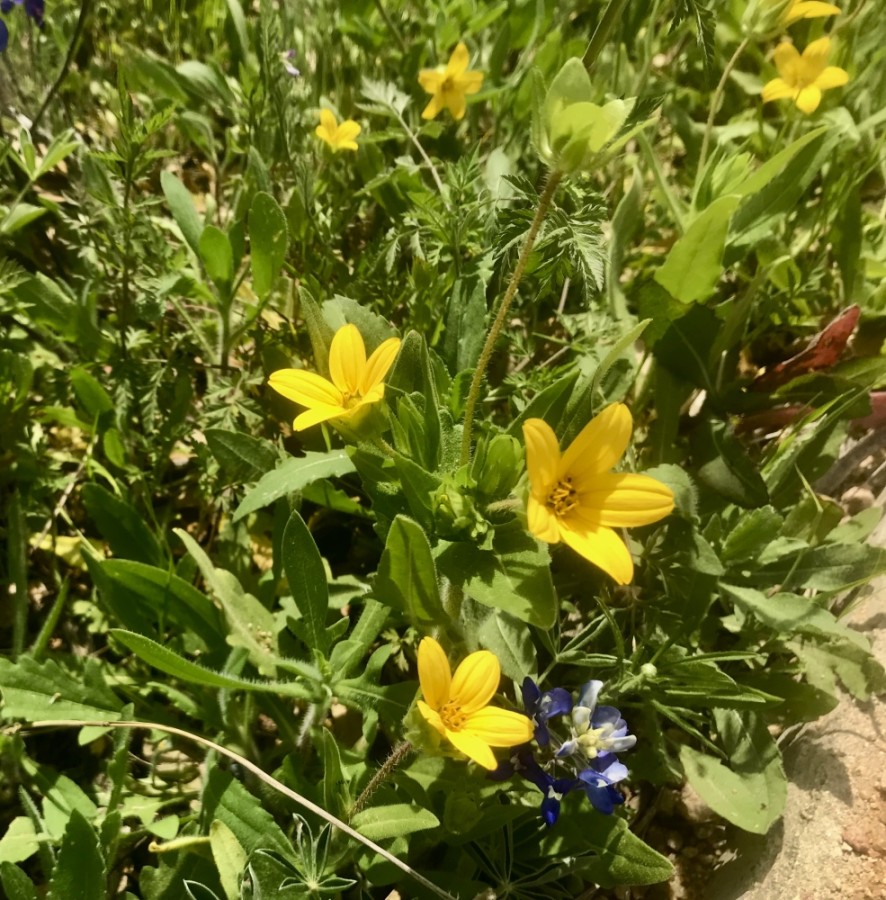 Visual: a small, star-shaped flower with yellow, pointed petals
Visual: a small, star-shaped flower with yellow, pointed petalsFun fact: Flower stars can have five, six or three petals.
Time active: March-May
Antelope horns milkweed
 Visual: cluster of small green, white and purple flowers atop a stem
Visual: cluster of small green, white and purple flowers atop a stemFun fact: Milkweed is the food source for monarch butterfly caterpillars.
Time active: March-October
Horsemint
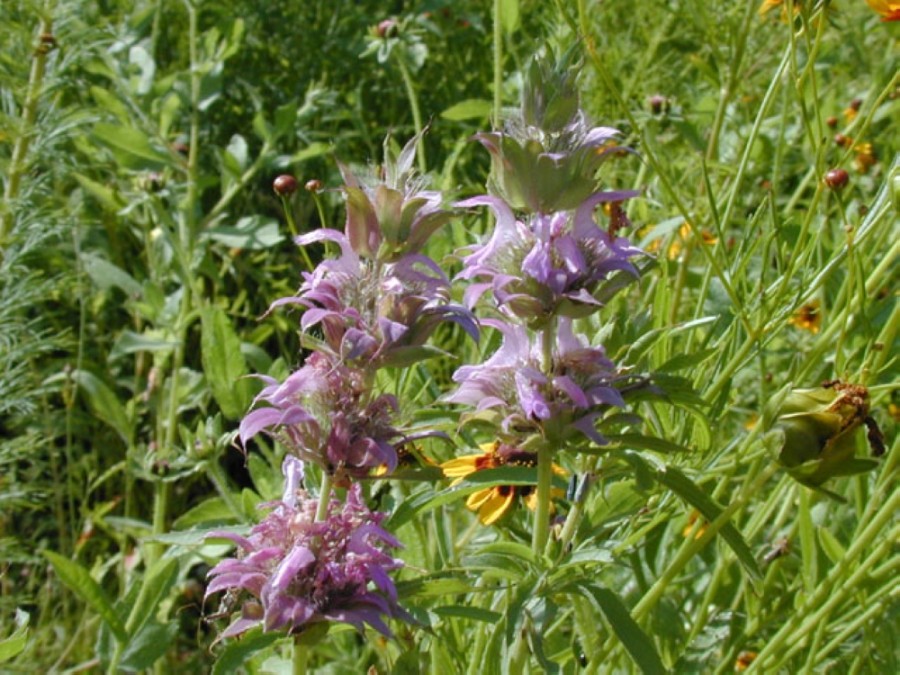 Visual: white, pink or purple flowers in bunches atop the stem
Visual: white, pink or purple flowers in bunches atop the stemFun fact: It can stay in bloom through the summer if adequate rain is present.
Time active: April-June
Plains coreopsis
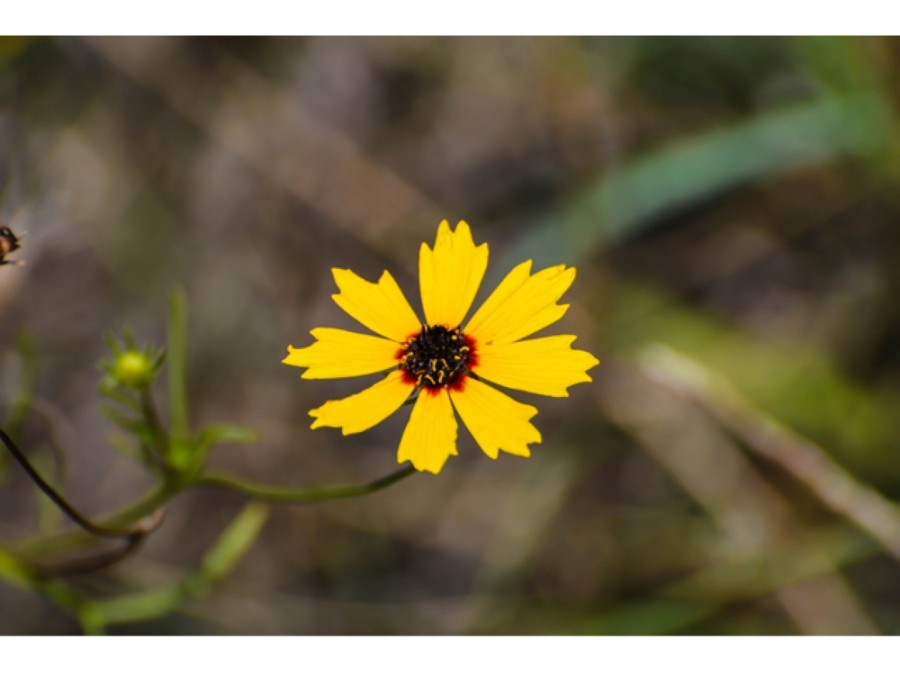 Visual: round flower head with yellow petals and a red ring at the center
Visual: round flower head with yellow petals and a red ring at the centerFun fact: It can be found across much of the United States.
Time active: April-June
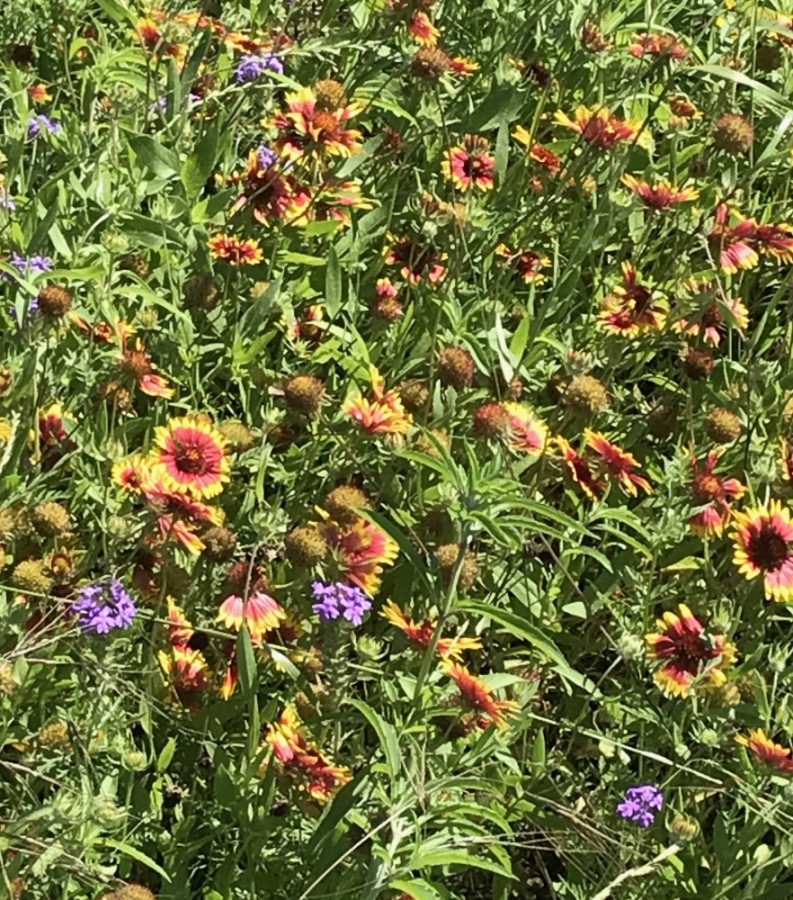 Firewheel
FirewheelVisual: round flower with yellow-tipped red petals
Fun fact: They are also known as Indian blankets.
Time active: April-June
Common sunflowers
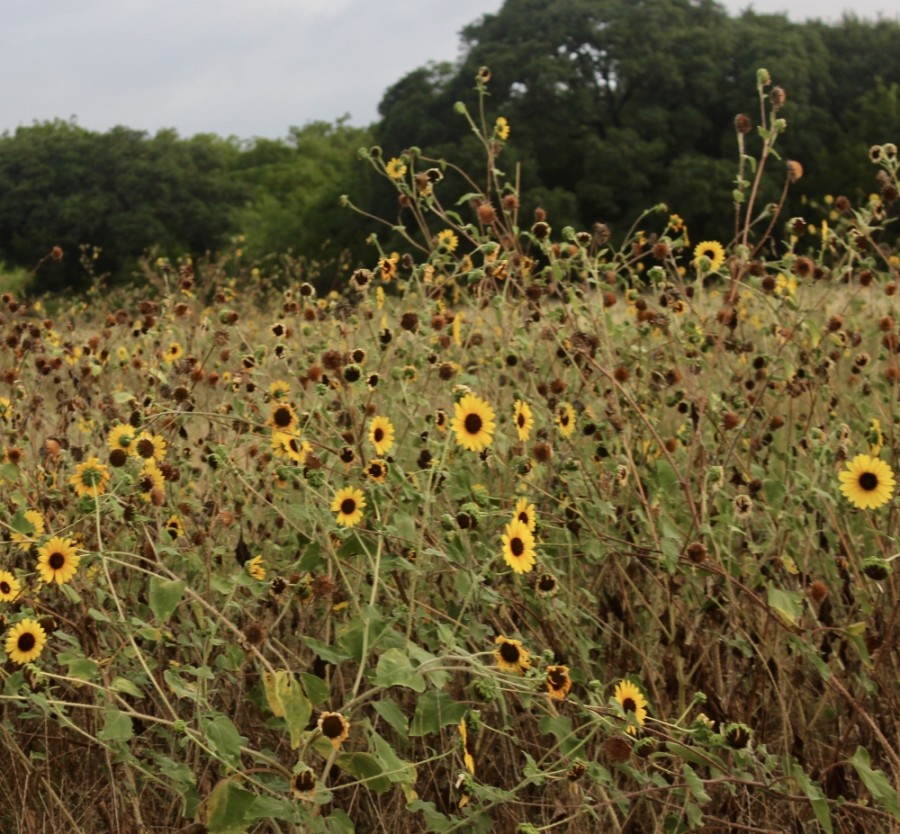 Visual: large, round yellow flowers with a dark brown seeded center atop a tall stem
Visual: large, round yellow flowers with a dark brown seeded center atop a tall stemFun fact: The seeds are edible and can be used to make oils.
Time active: July-October
Flowering trees
A number of native trees, including the Mexican plum and Texas redbud, bloom during the spring in Central Texas. Trees that go bare in the fall and winter produce flowers in early spring, which are replaced by leaves later in the season. Flowers can attract pollinators, while nectar and fruits produced can be a food source for native animals.
Mexican plum
Fun fact: It produces dark purple fruit that ripen in the summer.
Time active: February-April
Texas redbud
Fun fact: It has rounder, more glossy leaves than other redbud species.
Time active: March-May




